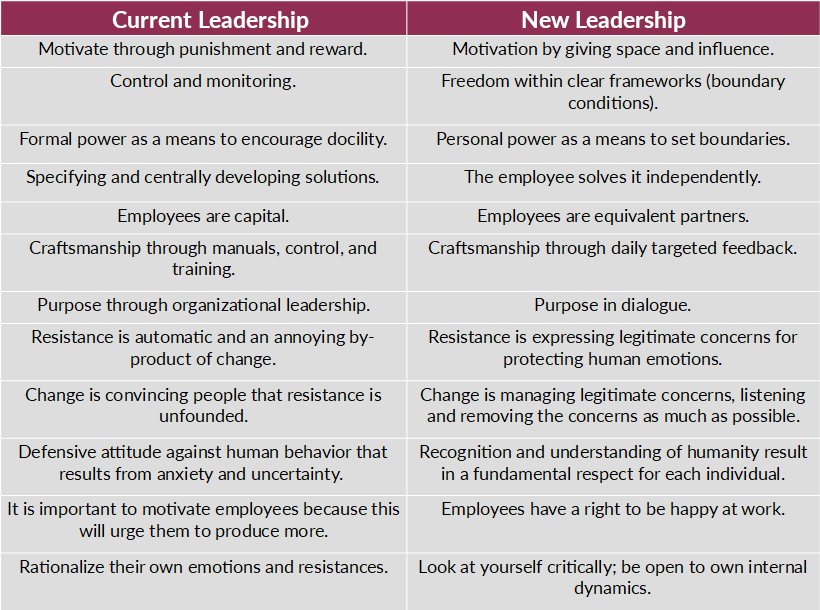This final article on New Leadership considers the huge role that communication can have on drive, and how strong leaders can make a conscious effort to motivate others through the way they communicate. It explains how we can become more aware of the underlying messages which we may not mean to send, and change our approaches to foster more autonomy, mastery, and a sense of purpose.
The Message Behind The Message
Whichever satisfaction survey you look at, communication is almost always the problem. There isn’t enough, there is too much, it deals with the wrong subjects, at the wrong times, etc.
However, I often feel that it is about something much more important: What are we actually communicating? What is the message behind the message?
After all, you can use words that emphasize the main considerations of New Leadership, but behind and between them, there is often an entirely different message. It often hides a lack of respect and sometimes even contempt.
For example:
I understand, but let’s look at the positive side. Or: Dreary pessimists.
We have to be more commercially active. Or: Wretched passive idiots.
That sounds good, but practically that is… Or: Theoretical idiot.
Conversations between managers and employees on every level in the organization often contain many of these messages that affect people’s self-esteem and effectively suppress motivation and participation. These messages suggest that well-formulated opinions often hide very different opinions… which is probably also true!
The best way to deal with this is to change your opinions.
In the meantime, there is much that one can do to use more conscious communication. The following scheme provides further detail in this respect.
Communication in Current vs. New Leadership
This table summarizes some of the key differences between Current Leadership – a generic leadership paradigm – and New Leadership. As my previous articles have discussed, the latter is concerned with creating the right conditions for people to develop autonomy, mastery, and a sense of purpose at work.

The Development of New Leadership
So, how do we go about developing New Leadership by ourselves? In short, and in my experience, you should follow three paths simultaneously.
- 1st path: Learn to understand and implement some relevant concepts that give life to New Leadership. For example the Management Funnel, Roos van Leary, the influencing skills related to Following and Leading, and the three levels of interaction – content, procedure, and interaction.
- 2nd path: Confront your own behavior and the impact thereof. This is possible by performing very specific and practical exercises in which you take the lead and afterward receive intensive feedback from the other participants and the supervisor.
- 3rd path: Acquire insight into your own intrapersonal dynamics and that of others. Learn to understand how this has implications for an organization and learn to deal with it.
At Compassion To Lead, we help leaders to implement key concepts such as the Management Funnel and New Leadership in their everyday roles. Our leadership coaching and Train the Trainer programs are always custom made to meet the unique demands of your organization and empower you to lead productive, happy, and healthy companies into the future.
Find out more at Compassiontolead.net or get in touch with me directly at marc@compassiontolead.com.
